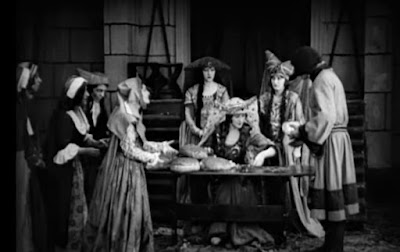Interviewed by Belinda Evans
Can you tell us a bit about your background?
My name is Pip Tunstill − I am an artist and live in Havelock Walk in Forest Hill. I graduated from Hornsey College of Art in Fine Art − followed by a stint in the V&A − followed by a side step into an Interior Design studio − (it’s a long story!) followed by a lengthy very enjoyable career as a senior lecturer in 3D & Spatial Design at Chelsea and Camberwell University of the Arts.
Now I paint full time and when I am not in the studio, I will usually be found each morning swimming outdoors throughout the year at Tooting Bec Lido with two fellow stalwarts from Havelock Walk − and yes its bloody freezing! During lockdown, when the pool was closed, the River Thames was a pretty good alternative!
What brought you to Havelock Walk?
My husband & I moved here 20 years ago from Wandsworth. We had been looking for a property to convert or a site to build on (my husband is an Architect) and heard about a possibility in Havelock Walk. We came to visit early one morning before work on a cold rainy winter morning − we walked down the street and a cheery voice from an open workshop asked us if we would like a cup of tea − that was it! We bought the site, built a glass & steel house my husband designed and 20 years later we are still here and are part of a thriving creative community that is Havelock Walk.
What inspires your work?
I started out as a landscape painter in which the work gradually became more and more abstract as I became interested in shape and form and colour. Teaching 3D / Spatial Design has definitely influenced the way I compose my paintings − inevitably they are a square format as I find it the most satisfying form in its symmetry and its ability to multiply. Many of my drawings are sequential and using repetitive mark making − even when confronted by trees. I tend to start with a deep border of colour which usually generates the first question!
- I find the edges of canvas /board /paper a problem
- I realised when I was painting landscapes that I always left a border round the image
- This has now continued into my abstract painting partly due to dislike of frames and also fear of the edge!
The colour becomes the frame. There are still landscape forms and structure which appear traced back to my earlier influences. I tend to work in layers creating a strong three-dimensional element which is the direct result of my strong interest in Architecture and Spatial Design. Intense colour drives the form and hopefully reflects my general optimism and joy in painting
What do you like about Havelock Walk?
It’s quite hidden considering how close it is to the South Circular and Forest Hill station. It is an historic cobbled mews where all the studios homes and workshops generate a very friendly and creative community. Studios are opened twice a year to the public as part of Dulwich Festival − this year May 14/15 and 21/22nd and again just before Christmas. We close the street put up the bunting, make music, serve food and welcome all and sundry!
What do you like about living in Forest Hill?
The Horniman Museum & Gardens was a godsend during the lock down. The gardeners worked throughout, and you became far more aware of nature in all its majesty. I started drawing trees which I haven’t done for 30 years which became my focus in the sameness of every day. Also, in the lockdown discovering all the green spaces which abound in Forest Hill. Excellent public transport (when the trains are running) − a station in which the Forest Hill Society, through its volunteers, maintains planters and greenly things.
Favourite coffee / bar/ restaurant?
For the best toasted cheese ever Aga’s Little Deli. Our own Canvas & Cream with its own studios and gallery – ‘our own’ because it backs onto Havelock Walk − as does the Guava Kitchen − which both serve great food at our Open Studio weekends. Big Cheeks Thai restaurant − despite its odd name. Tea Pot for breakfast and tea.












